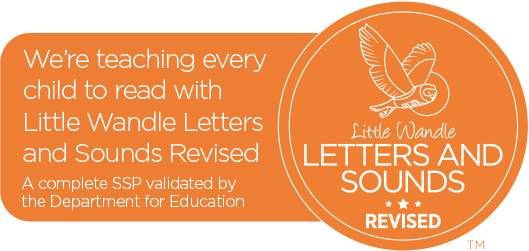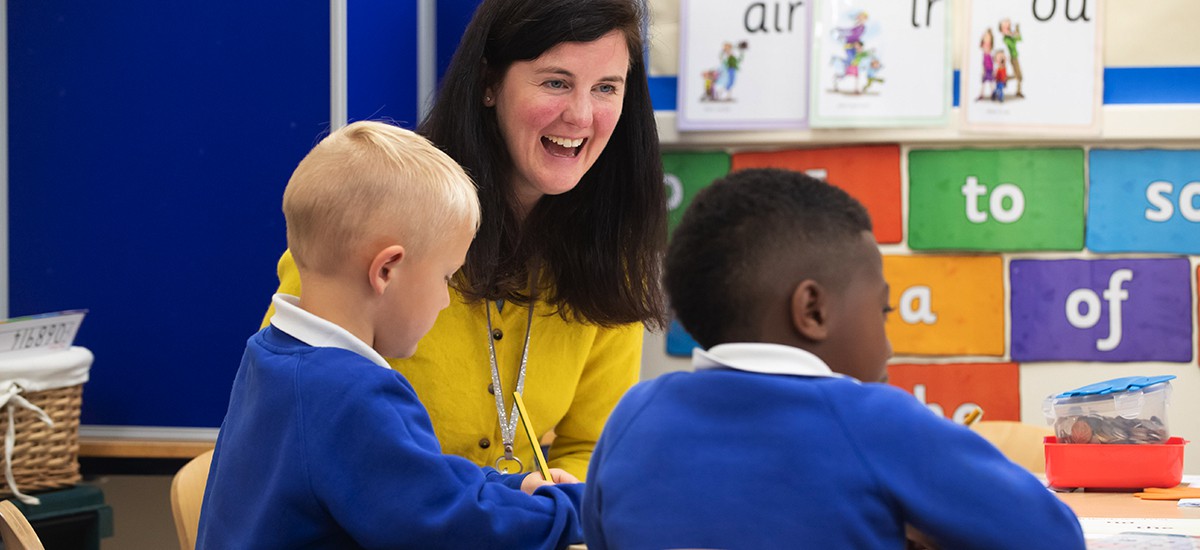
EYFS/Key Stage 1 Phonics and Reading
We believe the most important skill any child can leave primary school with is the ability to read independently and effectively for meaning. We therefore provide a curriculum which offers a structured approach to the teaching of reading through discreet reading lessons and embedding this work within our creative curriculum.
Phonics
Our teaching of reading is initially based on pupils learning sounds, (phonics). There is more to reading than this but there is a weight of evidence that systematic synthetic phonics, taught in the first years of a child’s education, gives children the key building blocks they need to understand words. This underpins children’s successful progress in reading and can inspire a lifetime love of books.
Alongside formal lessons, we are committed to promoting the importance of reading for pleasure. Evidence shows that young people who read for pleasure daily perform better in their lessons and assessments than those who do not read regularly. All teachers support children to enjoy reading and enable them to read a wide range of good quality fiction and non-fiction.
Phonics focuses on sounds rather than, for example, having children try to recognise whole words. In synthetic phonics, children start by sequencing the individual sounds in words – for example: ’s-t-r-ee-t’, with an emphasis on blending them together. As they learn their phonics they apply their skills through reading books of the appropriate level. Children who learn using synthetic phonics are able to tackle new words working from sound alone.
The phonics scheme we use at Raunds Park Infant School is well recognised and called ‘Little Wandle’; it begins in the Foundation Stage and progresses throughout the school. For the more information about Phonics teaching, please click here to access the Parents resources page for Little Wandle.
The resources on this page will help you support your child with saying their sounds and writing their letters. There are also some useful videos so you can see how they are taught at school and feel confident about supporting their reading at home.
Guided Reading
Guided Reading is introduced to the children in the Foundation Stage in preparation for transition to Year 1 and continues to year 2. Children are put into ability groups to read and discuss what they are reading with their teacher. The whole group reads the same book or an extract from a book and the teacher then asks specific questions to individuals based on their needs. The teacher will take notes about everyone’s progress and update reading records accordingly. During guided reading children are taught a range of reading strategies, not only phonics. They will look at punctuation, vocabulary and give their opinion about what they are reading. Children develop strategies to retrieve information and make inferences from the text which together improves their comprehension when reading.
Shared Reading
This is when the whole class study a book or a text. This could be a big book, a poster or class sets of books or extracts. The text is the genre which the class will be studying in their theme for that term, it is often quite challenging and a higher level than the texts they read independently. Shared reading is often followed by independent comprehension work or a writing activity. It is also a technique used when reading about other subject areas e.g. in History or Science lessons.
Individual reading
This is when children read to Teachers, Assistant Teachers or classroom volunteers. What children need to work on next is recorded so whoever listens to the same pupil next time is informed. There is also quiet reading time in class as well as opportunities for the children to regularly visit the school library. As children grow in confidence with their reading, it is positive that children also read independently at home as well as reading to a parent, carer or a sibling on a daily basis.
What books do children read?
Children choose their books according to the level they need. We do not use one scheme but a selection of books by different authors and publishers. There are occasions when children choose to read the same book more than once, this is not a problem and it helps children establish the type of genre they enjoy.
Assessing Reading
At Raunds Park Infant School, teachers are gathering information about children’s reading on a daily basis from a number of activities. This helps us ensure lesson planning meets the needs of individuals. Teachers also assess and record reading progress in terms of National Curriculum levels three times a year. Any child who is not making the expected progress is identified and strategies are put in place to support them. This could be in the form of 1:1 teaching, small group activities or being heard read on a more regular basis. All Y1 pupils are tested in June to establish their phonic knowledge and the results are reported to parents. Extra support is given to any child who has failed to reach the expected standard. Statutory testing of reading takes place at the end of Y2.
If you have any questions about how children learn to read at Raunds Park Infant School please contact either of the school offices or your child’s teacher.
Below are strategies as to how to support your child at home with their developing reading skills
The whole book. Before beginning to read a new book, look at the front cover, back cover and pictures. Ask them if they know what the book is going to be about. What does the blurb tell you?
New words. If they are stuck on a word support them with reading it rather than telling them. Encourage them to sound it out. Is it a tricky word? Look at the first sound and the picture, to see if it gives a clue.
Dig deeper into the story. Ask your child questions about the story you've just read. Make the experience interactive by asking questions about the story, the pictures and what they think of the characters. Where is the story set? What do they think is going to happen next in the story? Why? These sorts of questions help the children understand what they are reading.
Once is not enough. Encourage your child to re-read favourite books and poems. Re-reading helps children read more quickly and accurately.
One more time with feeling. When your child has sounded out an unfamiliar word, have him or her re-read that sentence. Often children are so busy figuring out a word they lose the meaning of what they've just read.

